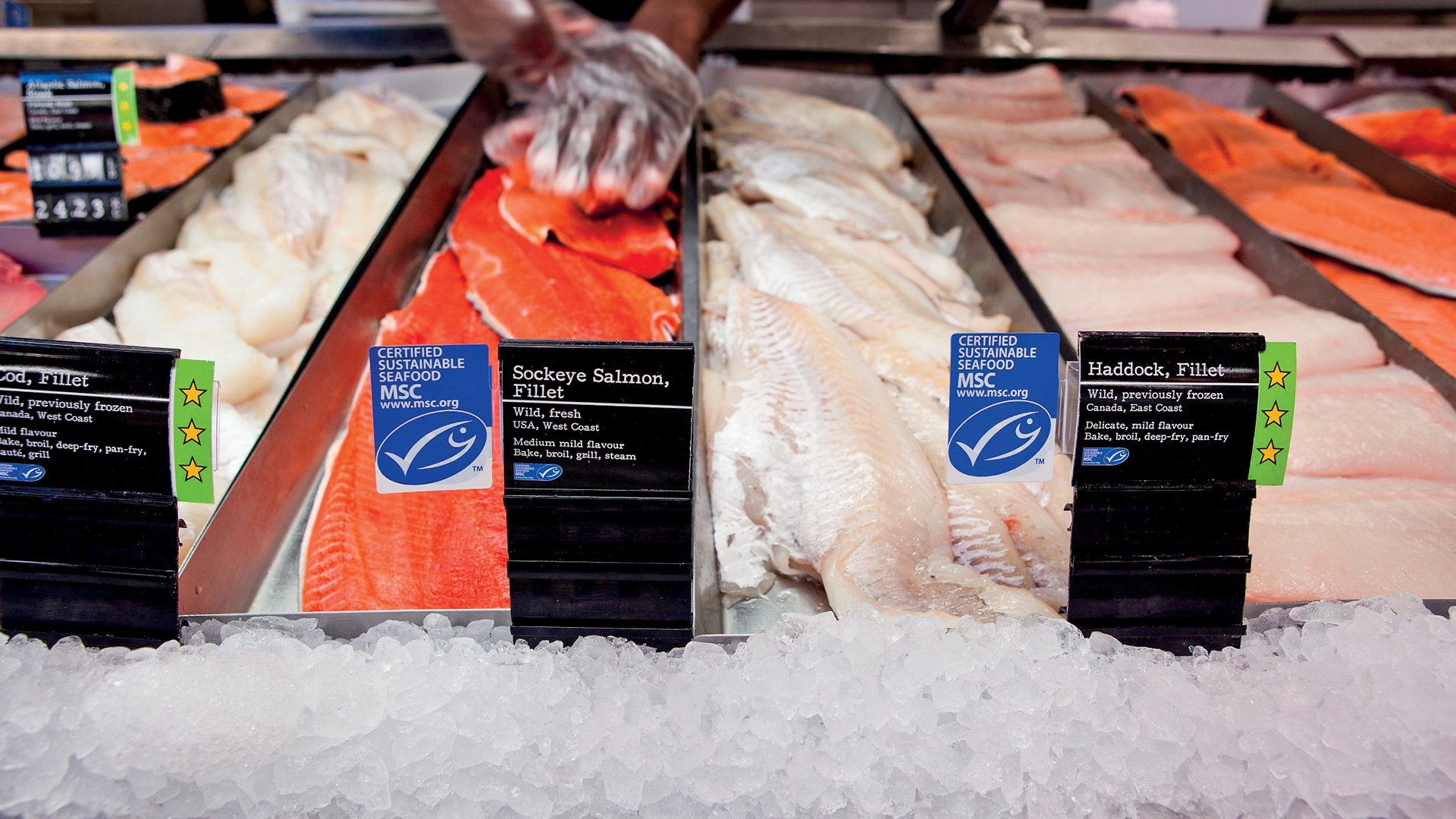A new Marine Stewardship Council study has found mislabeling of its certified seafood is lower than the average of several other recent studies, which claim to have detected seafood mislabeling rates as high as 30 percent.
MSC’s expansive analysis of 1,402 MSC-certified fish products from 18 countries found that fewer than 1 percent of MSC-labeled seafood products were mislabeled.
The results were published in the journal Current Biology.
“There is widespread concern over the vulnerability of seafood supply chains to deliberate species mislabelling and fraud. In the past, this has included some of the most loved species such as cod being substituted by farmed catfish, which can seriously undermine consumer trust and efforts to maintain sustainable fisheries,” the lead of author of the paper, the MSC’s Jaco Barendse, said in an MSC press release.
The MSC’s ecolabeling and Chain of Custody program is an effective deterrent for systematic and deliberate species substitution and fraud, the organization said.
In the new study, the largest and most comprehensive assessment of MSC-labeled products, MSC worked with laboratories of the TRACE Wildlife Forensics Network and Science and Advice for Scottish Agriculture's Wildlife DNA Forensic unit to employ DNA barcoding.
Of the 1,402 seafood products tested, 1,389 were labeled correctly and 13 (0.92 percent) were not. Mislabeled products were found in fresh and frozen pre-packed products and in restaurants, mainly in Western Europe, with one case in the U.S. All cases of mislabeling were identified in whitefish (such as cod, hake, and hoki) and flatfish products.
Ray Hilborn, professor at the University of Washington’s School of Aquatic and Fishery Sciences, is not surprised by the MSC’s findings, since fish certified by the organization has a chain of custody. In addition, the mislabeling rate on commonly-consumed species is typically low, Hilborn told SeafoodSource.
“Oceana concentrates on the few species where mislabeling is common, thus their high estimated rates of mislabeling,” he said. “Few of those species are MSC-certified and most would not be sampled much in a true random sample.”
While some mislabeling is intentional and profit-motivated, much of mislabeling is caused by “taxonomic confusion and ignorance on the part of the restaurants, where mislabeling is most common,” Hilborn said.
“As you go from harvester to processor to distributor to restaurant, the opportunities for confusion increase,” he said.
There are many reasons that mislabeling may occur, MSC said in its press release.
“Unintentional mislabeling can result from misidentification of species when the fish is caught, mix-ups during processing, or ambiguities in product naming, such as the use of catchall trade names such as ‘snapper’ or ‘skate,’” it said.
On the other hand, fraud is “intentional substitution mainly for financial gain,” MSC said. “Fraud may also arise when species from unsustainable or illegal fisheries gain access to the market by passing them off as legally caught fish.”
For the 13 mislabeled products in the study, records were obtained from each company at each step in the supply chain.
“Trace-backs revealed that only two mislabeled samples could be confirmed as intentional substitutions with species of non-certified origin,” the organization said. “MSC-certified products can command higher prices and better market access than non-certified products therefore these substitutions were likely to be fraudulent.”
The companies responsible for the substitutions had their MSC certificates suspended, according to the organization.
Meanwhile, there were other instances where substitutions inadvertently occurred at the point of capture or during on-board processing – likely due to misidentification between closely-related, similar-looking species that co-occur in the catch.
“There was no discernible financial motive,” MSC said.
Rob Ogden, with TRACE Wildlife Forensics Network and the University of Edinburgh, said the study shows the success of the MSC certification in helping to combat fraud.
“The use of DNA tools to detect substitution in the fish supply chain is well-documented but, until now, has essentially revealed a depressing story. Our research flips this on its head and demonstrates how we can apply similar technology to validate the success of eco-labels in traceable, sustainable fishing,” Ogden said.
Although MSC Chain of Custody Certification requires separation of MSC and non-MSC certified products, there remains a risk for possible deliberate substitution between certified sustainable and other fish of the same species, according to MSC Head of Strategic Research Francis Neat.
“While we can get a good indication of whether species-level substitution is taking place, using DNA barcoding and tracebacks, the future for the MSC is to invest in state-of-the-art next generation gene sequencing and isotopic and trace element profiling,” Neat said. “This will make it possible to determine which stock a fish product came from, in addition to whether it is the species mentioned on the packaging.”
This story was originally published in by Seafood Source and is republished here with permission.







